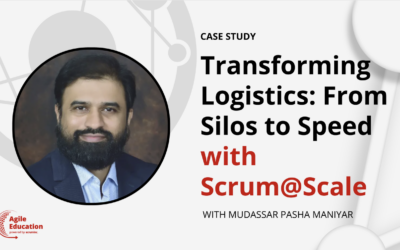Scrum@Scale Case Study
Agile Regulation: The Importance of Symbolic Leadership
How does a Scrum@Scale Trainer implement Scrum and a scaling Scrum framework in a company that “doesn’t do projects”? Learn more below.
CASE STUDY SNAPSHOT
Trainer Name: Ian Spence
Organization: Gibraltar Financial Services Commission
Organization Size: Small
Industry: Financial Services
Topic: Regulatory and Compliance
Date: 2018
Website: Ian’s website
Summary
Can the Scrum@Scale framework be used to improve the business of regulation and legislative reform? In this case study, Scrum@Scale Trainer Ian Spence showcases how Gibraltar Financial Services Commission, the regulatory and supervisory function for the British Overseas Territory, transformed their way of working to achieve high-performing team, positive cultural change, smarter decision-making, and a highly functional Executive Action Team (EAT). The secret to this success story? Symbolic leadership; the leaders of Gibraltar Financial Services Commission drank their own champagne and utilized Scrum.
Key Results
Ian Spence and the Gibraltar Financial Services Commission learned three key lessons:
- Leading from the front leads to success. When the most Agile people in your organization are the executives, it sets the standard and enables change.
- Implementing Scrum@Scale in a non-IT, non-development environment works because it still revolves around high performing teams, collaboration, empowerment, and culture.
- To speak to a non-IT organization, cut the buzzword lingo. Ian Spence learned quickly that Gibraltar Financial Services Commission’s goal is not product development. Even though traditional approaches to management and organization were not working, using Scrum meant losing the buzzwords and focusing on what was right for the organization. Now, the Gibraltar Financial Services Commission’s goal is to be flexible, responsive, and highly adaptive whilst ensuring stability. According to their strategic planning, the organization considers becoming more Agile will further enhance their delivery of regulation to benefit all.
Who is Ian Spence
Ian Spence is an Agile coach and trainer specializing in large-scale transformations. An experienced Agile coach, consultant, team leader, analyst, architect, and Scrum Master, Ian has practical experience of the full project lifecycle and a proven track record of delivery within the highly competitive and challenging IT Solutions environment.



